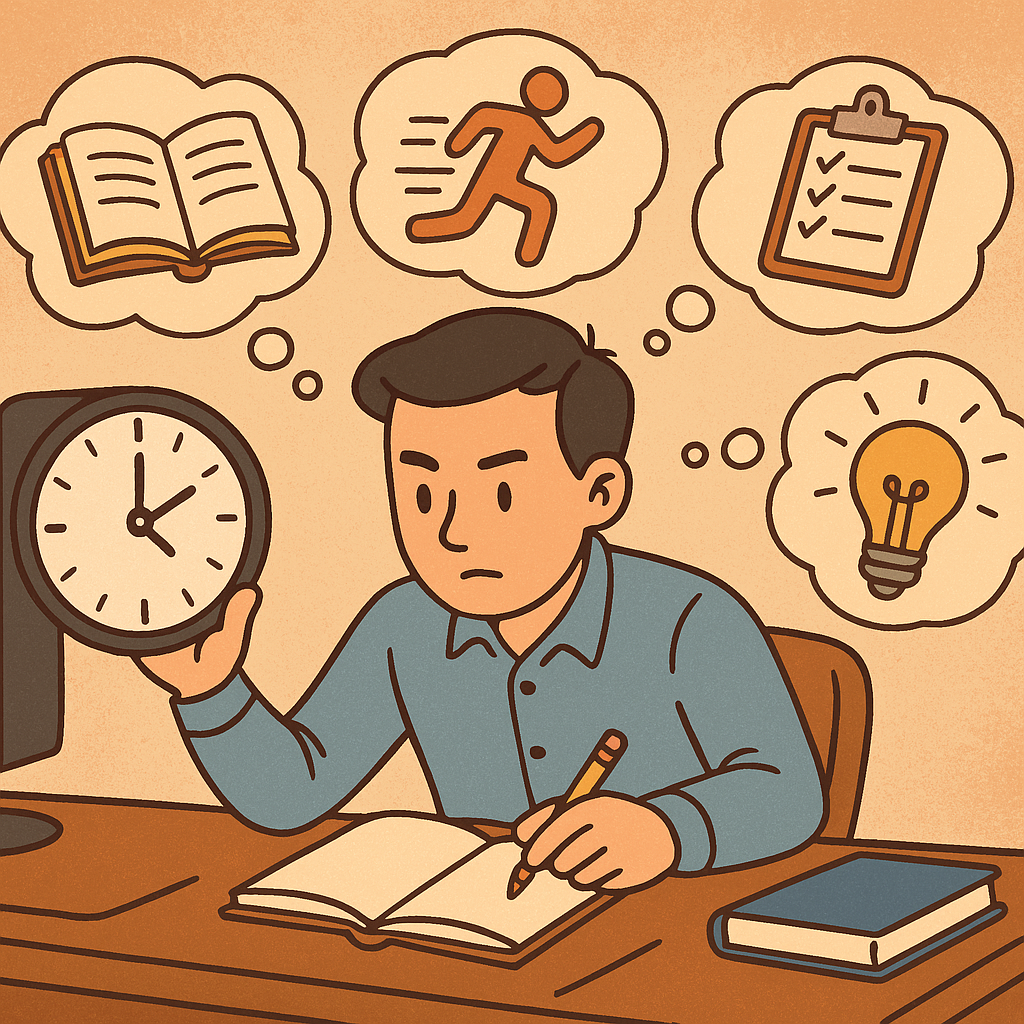The pressure to optimize every hour drives productivity—and often burnout. But what really happens when you stop optimizing every hour and embrace longer work sessions? Let’s uncover the surprising science behind this choice.

1. Less Stress, More Focus
Burnout from constant optimization
Pushing to maximize every minute leads straight to stress and exhaustion. A recent workplace burnout survey found that heavy workloads and long hours top the list of burnout causes (40% of respondents). According to SHRM, logging off at the end of the day boosts productivity by 20% shrm.org.
So what happens when you stop optimizing every hour? You give your mind room to breathe, which helps maintain concentration over longer tasks.
2. Embracing Deep Work
Weekly schedules packed with short sprints hinder deep thinking. Cal Newport’s “deep work” style requires at least 60–90 minutes of undistracted effort, something near-impossible when you’re chasing hourly checkpoints.
Without constant optimization, you can:
- Tackle complex problems more effectively
- Experience fewer context switches
- Finish high-level thinking tasks without interruption
3. The Pomodoro Trap
The Pomodoro Technique (25-minute work, 5-minute rest) has become a productivity staple. Yet burnout warnings are emerging. One user shared:
“After three years of religious use… I learned there is a better way”.
Research supports this caution: when students self-timed breaks, they reported higher fatigue and distraction than following fixed schedules shrm.org+3pubmed.ncbi.nlm.nih.gov+3en.wikipedia.org+3. The takeaway: if rigid, even Pomodoro can feel draining.
4. Benefits of Longer Blocks
When you ditch rigid timers and stop optimizing every hour, you tap into several performance gains:
- Creative flow
Multi-hour sessions allow ideas to fully develop, often hitting breakthroughs mid-task—something impossible in 25-minute bursts. - Customized pacing
Some tasks need sustained focus—coding, writing, designing. You adapt session length to your rhythm, not a timer. - Psychological ease
Constant “optimize this hour” thinking signals urgency. Removing it eases mental load and reduces stress.
5. A Balanced Work-Break Mix
Planned breaks are still essential—but they don’t have to come every 25 minutes. Harvard researchers found breaks that are unexpected, restorative, and connected to work can actually boost performance.
Try this instead:
- Work for 60–90 minutes, then stretch and hydrate
- Opt for cognitive micro-breaks (deep breaths, a quick reflection)
- Let breaks be flexible—sensed, not scheduled
This way, your breaks support your flow without fragmenting it.
6. Burnout & Well-Being
Physician research shows burnout correlates directly with workflow demands. High hourly loads, documentation, and constant optimization cause stress—and patient safety issues.
When you stop optimizing every hour:
- You reduce administrative pressure
- Gain clarity and control over time
- Support mental resilience, lowering exhaustion risk
It’s the difference between managing energy and managing tasks.
7. Implementation Guide: Stop Optimizing Every Hour
A. Self-awareness first
Monitor your energy: Do you hit a wall every 25 minutes? Make note.
B. Redesign your day
Create two or three 90-minute focus blocks with natural breaks.
C. Customize break style
Choose what restores you—walk, chat, meditate—whatever suits your brain.
D. Review and adapt
At day’s end, assess your productivity and stress. Gradually refine your blocks.
E. Avoid all-or-nothing thinking
If an hour feels too long, try 45-minute sprints with a 10-minute pause. The goal is fewer interruptions, not marathon runs.
8. Real-World Examples
- Engineers & creatives often use “time-boxed deep work” instead of strict Pomodoros—log off hourly trackers and gain creative momentum.
- A case study at Girl Scouts USA showed flexible schedules boosted productivity and morale.
These real outcomes show that stepping off the optimization treadmill is not anti-productivity—it’s pro-balance.
9. When It Might Not Work
This style isn’t for everyone:
- Highly structured roles, like call centers or hourly billing, may still need routine check-ins.
- Acute-focus tasks, like time-limited meetings, require synchronization.
- Self-discipline is key—longer blocks can lead to procrastination if you’re prone to distractions.
If any of these apply, blend approaches: a few hourly check-ins with deep work blocks.
10. Key Takeaways
- Stop optimizing every hour reduces stress, fatigue, and context switching.
- Longer blocks support deep work and creative insights.
- Flexible breaks—restorative, unexpected, and meaningful—improve performance.
- Approach change like an experiment: monitor, adjust, optimize intentionally.
Conclusion
Hourly optimization orders us to squeeze every minute—but the payoff can be stress, distraction, and burnout. Empowered by research and creativity, you can be more efficient, energized, and engaged by simply stopping the hour-by-hour optimization grind.
It’s not about ignoring productivity—it’s about balancing it with well-being and allowing your mind the space it needs to do its best work.
References
Denning, T. (2023). Trying to Relentlessly Optimize Your Schedule to Maximize Every Minute Misses These Few Important Things. Substack. Retrieved from https://timdenning.com/over-optimization/
The Dangers of Over‑Optimizing.” (2024). TrueSelf. Retrieved from https://www.trueself.com/the-dangers-of-over-optimizing-2667353576 trueself.com
Birchwood Clinic. (2024). The Dangers of Optimization Culture. Retrieved from https://www.birchwoodclinic.com/the-dangers-of-optimization-culture/ birchwoodclinic.com






